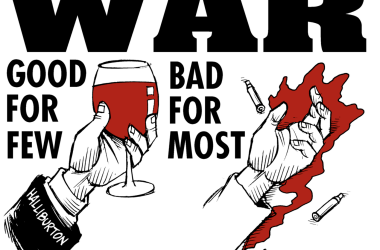By Gabriel Kuhn
A review of J. Sakai’s The “Dangerous Class” and Revolutionary Theory: Thoughts on the Making of the Lumpen/Proletariat. Originally published on AAP.
There are people who write a lot of books, hoping that somewhere down the line they’ll have a winner. Then, there are people who write a book every thirty years and make sure it’s groundbreaking. J. Sakai belongs to the latter category. Settlers: The Mythology of the White Proletariat, originally released in 1985, is still considered, rightfully, a seminal work in anti-racist and anti-imperialist circles. Now, The “Dangerous Class” and Revolutionary Theory: Thoughts on the Making of the Lumpen/Proletariat is destined to become another hit with militants weary of the old left’s sloganeering and the new left’s just-do-it philosophy (or was that Nike?). A study of this kind, investigating the history and revolutionary potential of the lumpen, the class vilified and feared by Marx and his followers, has simply not been presented before. It is interesting that an addendum reveals how the editor had quizzed Sakai about the relationship of his work to Eric Hobsbawm’s investigation into the politics of what he called primitive rebels. One of the first things I scribbled in my notebook in preparation for this review was: “a study akin to Primitive Rebels – but dirtier, urban, and non-apologetic.”
Sakai reveals plenty of sympathy for the sex workers, beggars, thieves, and vagrants he describes, but he never falls into the traps of romanticization, which gives his account particular strength and credibility. The lumpenproletariat he defines thus:
“The lumpen/proletariat cannot be defined as simply the poorest of the poor, or the ever-unemployed. Nor can it be pictured simply as career criminals and beggars, as many believe. Although these categories often find themselves within the lumpen. It is identified by its central characteristic: as a ‘partial-class’ or ‘non-class’ of peoples who have voluntarily or involuntarily left the ‘regular’ classes of economic production and distribution. Who are ‘unplugged’ if you will from regular class society. Of those declassed fragments or strata fallen out of the class structure, who are then forced to find a living from parasitism or outlaw activities.”
Here is the explanation for the unconventional spelling being used:
“The standard spelling in translations of Marx and Engel’s writing is the familiar ‘lumpenproletariat,’ or sometimes with a hyphen, ‘lumpen-proletariat.’ I prefer and use here ‘lumpen/proletariat,’ because it conveys the essential ambiguity of this ‘non-class.’ In grammar a slash can join two related things or link two opposites, or both (such as ‘black/white,’ ‘on/off,’ or ‘interrogation/torture’).”
It’s a neat and witty touch, even for anal German-speakers such as myself.
Sakai is convinced of the lumpens’ importance for the revolutionary endeavor. He calls them a “wildcard in the process of change, in every society worldwide.” Here is a bit of elaboration:
“The crisis of revolutionary thought right now is that it’s plain too old and obsolete. Meaning that in practice it’s largely unusable. This is understood as a practical reality, and we usually leave revolutionary theory behind us in the attic when people go out to play. Nowhere is this more true than when it comes to the lumpen/proletariat, that most dramatic, most elusive of maybe-or-maybe-not ‘classes.’ This matters because the revolutionary movement and the lumpen have a much longer and more involved relationship than we’ve fully owned up to. Whether revolutionaries think it’s good or not, the lumpen are going to play a big part in everyone’s future.”
As far as the position taken by Marx and Engels is concerned, Sakai offers convincing corrections: “Marx and Engels didn’t see how we always need some outliers to creatively cross lines and go against laws and customs. To be rule-breakers. Finding new shortcuts and paths for the most oppressed and those without hope.”
In Sakai’s analysis, we are witnessing an “absolute and relative growth of the lumpen/proletariat … due to basic changes in world capitalist development.”
At this point, I have three questions:
1. If the lumpenproletariat consists “of peoples who have voluntarily or involuntarily left the ‘regular’ classes of economic production and distribution,” and who are “forced to find a living from parasitism or outlaw activities”, then how does this apply to middle-class dropouts who have no income to speak of, reject the values and careers propagated by their class, live on the margins of society, but still have middle-class written all over them? It is flattering to think that I could be part of a non-class, but is it really true?
2. Some of Sakai’s descriptions of the modern-day lumpenproletariat echo discussions about the so-called precariat, which the economist Guy Standing has called “the new dangerous class,” while others have referred to it as a “non-class,” the term Sakai uses for the lumpen. It would be interesting to know what Sakai had to say about this.
3. Since I’ve already outed myself as an anal German-speaker, I won’t hold back. The thing is, I am wondering about the relationship between hailing a “non-class” on the one hand, and insisting that “everything is made of classes and class strata” on the other. I assume the answer is to be found somewhere in the observation that the lumpen are “the catalysts in the motions of major classes, the first doers, the apostles and the true believers, the risks of change personified” (as in, the non-class element that shakes up class society?), but I’d still like to hear more about this.
The “Dangerous Class” and Revolutionary Theory contains expected chapters, such as a long one on “rechecking original code,” dedicated to Karl M, as Sakai likes to call him, and unexpected ones, for example on Jane Austen, the author who brought us the likes of Pride and Prejudice, which was not conceived as a Hollywood film back in the day.
Sakai is no service company and doesn’t deliver his points prepackaged. You’ve got to find them between the lines, like in a Jane Austen novel. Sakai’s writing is theoretically sincere, but skips the academic BS. Tremendously refreshing. His work is proof that revolutionary theory can read like a graphic novel, with the benefit that you can create the images yourself. Mind you, if that’s too much of a bother, there are plenty of great illustrations in this beautifully designed book to keep you entertained. The extras – a book-length study of the lumpen in the Chinese Revolution, and the 1976 text “Blackstone Rangers: u.s. Experiment Using ‘Gangs’ to Repress Black Community Rebellion” – are added on the flipside, which makes the edition a true collector’s item.
The density of the Chinese Revolution piece, titled “Mao Z’s Revolutionary Laboratory & The Lumpen/Proletariat,” might overwhelm some readers but Maoists should be all excited. I can’t wait to see discussions about the youmin, bandits, and secret societies. The Blackstone Rangers article is proof that Sakai doesn’t sell revolutionary propaganda cheap. Having witnessed the Chicago street gang operate first-hand, he writes: “It was hard for me to romanticize that away as so many movement people were doing politically.”
This might provoke some people. But Sakai knows that provocation can get the party started. How about this one?
“i always notice when the UN or some children’s rights agency screams about the recruitment of ‘child soldiers’ in some lumpen Afrikan civil war. Not that we’re the same as them, but fact is that revolution is like pure mathematics – it’s best for the very young. Like in desperate poverty and oppression, is it really better for kids to just sit there and die passively? Grown-up societies aren’t going to save them, that’s for sure.”
On a selfish note, I feel it is a pity that the English-language edition of writings by the German anarchist Erich Mühsam, which I put a fair bit of work into some years ago (Liberating Society from the State), isn’t read by anyone. The sales figure for 2016 was a statistically intriguing -6, which had to do with returns or some other feature of the industry I don’t understand (although I fully comprehend that it wasn’t designed to boost an author’s self-confidence). Sakai points out that anarchists have been much more open to the lumpen than their Marxist counterparts, but Mühsam has probably left the most detailed account of anarchist attempts to organize among them. He did so in Munich in 1909-1910, chronicling the experience in the articles “New Friends,” “The Fifth Estate,” and “My Secret Society.” Mühsam acted much like a missionary and was unsuccessful. He ended up in court after some of his new acquaintances had said a word or two too many about his teachings to the police, but remained defiant: “I have been asked repeatedly if, given my negative experiences, I have had enough, if it was not my intention to stop working with these people. My response is: No!” In case your curiosity has been aroused, you can always get the book. It won’t be sold out anytime soon.
However, The “Dangerous Class” and Revolutionary Theory might be, or at least it would deserve it. I’m not even sure if I share Sakai’s enthusiasm (“the notion of having a revolution or any kind of crisis at the grassroots of society without the lumpen – invited or not – is almost laughable”), but the book educates us and makes us think, and this is what books are for. Let’s end this with one of its finest observations:
“Our anti-capitalist theory has been so outdated, that despite our good intentions it’s more like slogans than maps. … Even postmodern society is fought over continually by classes, no matter how disguised their identity and moves. In real life these classes are much more complex and diverse than they appeared in the early days of Europe’s 19th century industrial capitalism. That’s why real-time theory about classes is such a practical need for us.”
(February 2018)
More blogs from Gabriel | Back to Gabriel Kuhn’s Author Page






